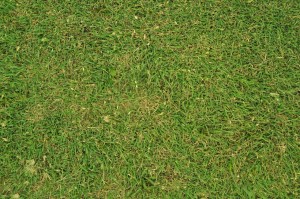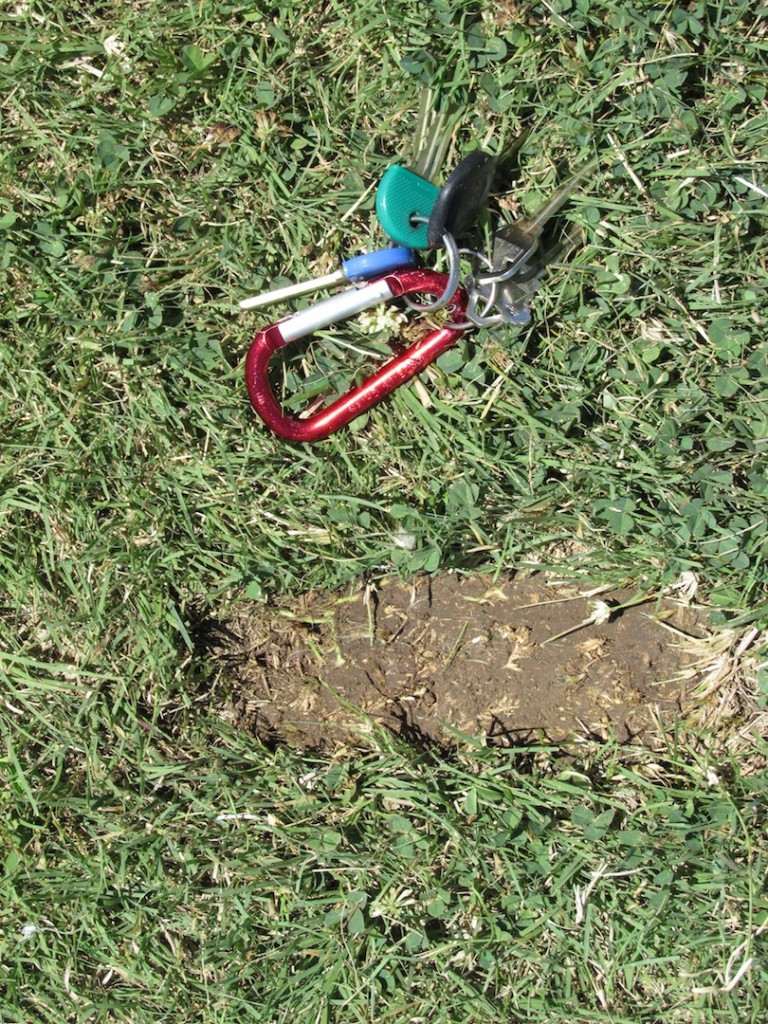(By Evan Alderman and Jared Hoyle, KSU Turfgrass Research and Extension)

In recent years, water conservation has been a growing trend in the golf course industry.With the spotlight on the golf course industry to become more conscious of the environment, one of the classic prairie grasses may be able to help low-budget golf course operations save water and money. buffalograss, Buchloe dactyloides, is known for being drought tolerant, which is why it fits into the discussion as a viable option for water conservation. Additionally, buffalograss is also known for its disease resistance, as well as its slow growing characteristics.
Buffalograss is very versatile and can be utilized on the golf course in native areas, roughs, and fairways. Many courses in Kansas are currently using this species in one of these three ways, however limited research exists to explore buffalograss management.
In order to explore buffalograss in further detail, we decided to look at how fertility influences recovery from divot injury. Furthermore, we looked at the influence of quick and slow release nitrogen fertilizers and their rate on the divot recovery.
Currently, we have three different divot studies in progress; two at the Rocky Ford

Turfgrass Research Station in Manhattan, KS, and one at the Council Grove Country Club, in Council Grove, KS. Divots were made using a modified edger with 13 circular blades. This device was able to produce a divot similar to a real divot one would find on the course.

Each study consists of eight treatments arranged in a two by four factorial. Factors included nitrogen rate and nitrogen source. Nitrogen rates were 0, 1, 2, and 3 lbs N /1000ft2. Nitrogen sources were Urea and Polymer Coated Urea (Table 1).
Table.1 Influence of Nitrogen Rates and Sources on Buffalograss Divot Recovery Study Treatment List.
| Treatment | Source | Rate |
| 1 | Urea* | 0 lbs N/1000ft2 |
| 2 | Urea | 1 lbs N/1000ft2 |
| 3 | Urea | 2 lbs N/1000ft2 |
| 4 | Urea | 3 lbs N/1000ft2 |
| 5 | Polymer Coated Urea*** | 0 lbs N/1000ft2 |
| 6 | Polymer Coated Urea | 1 lbs N/1000ft2 |
| 7 | Polymer Coated Urea | 2 lbs N/1000ft2 |
| 8 | Polymer Coated Urea | 3 lbs N/1000ft2 |
*The quick release fertilizer that was used was a 46-0-0 Urea, and to achieve the 1lbs, 2lbs, 3lbs two half-rate applications were made, one on the initiation date, and the second four weeks after initiation.
**The slow release fertilizer used was a 120 day controlled release polymer coated Urea, with an analysis of 43-0-0. Just one application of the slow release was made.

Pictures of each divot are analyzed with digital image analysis software to measure how quickly the divot recovers. Other data taken include visual color, quality, and percent recovery.
Since the initiation of the study, we were able to see a definite flush of green from the application of the quick release fertilizer at all rates. In terms of quality, the plots that received 2lbs and 3lbs resulted in the highest quality. Plots receiving 1lbs of N/1000ft2 also resulted in acceptable turfgrass color and quality although lower than the 2lbs and 3lbs N/1000ft2 treatments. As far as the nitrogen rates influencing divot recovery, we hope to find at which nitrogen application rate and source will result in the quickest buffalograss divot recovery.
